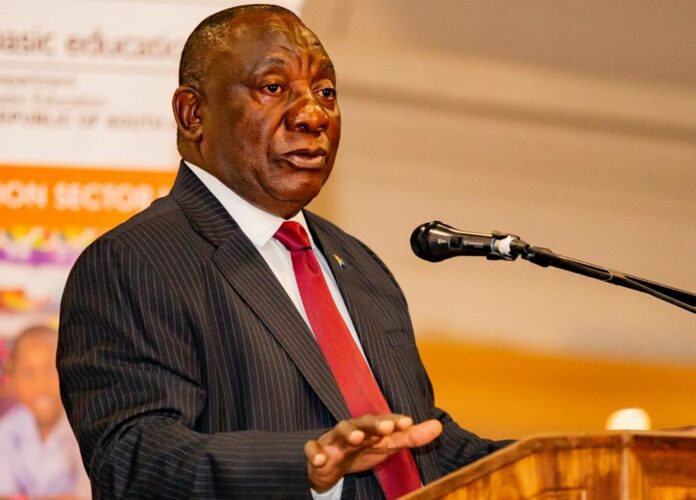President Cyril Ramaphosa.
- President Cyril Ramaphosa in February promised to “fundamentally change” energy generation in the country in the next few months.
- Among the seven key reforms, Ramaphosa introduced was to get more power from IPPs, and allow cities to buy their own power.
- However, five months since Ramaphosa’s promises, the country have been plagued with another round of load shedding.
During his State Of the Nation (SONA) address in February, President Cyril Ramaphosa promised to “fundamentally change the trajectory of energy generation” in South Africa “over the next few months”.
In his speech, Ramaphosa laid out seven key reforms to “significantly increase generation capacity outside of Eskom” which included procuring additional power from independent power producers (IPPs), and enable municipalities to buy its own electricity.
However this past week – five months since Ramaphosa’s promises – South Africans saw another wave of load shedding as state-owned electricity supplier Eskom lost generating capability.
Load shedding, aside from the frustration and rise in crime it contributes to across the country, costs South Africa’s already fragile economy billions and contributes to job losses.
This year marks more than 13 years since Eskom first introduced load shedding.
News24 spoke to the Department of Mineral Resources and Energy (DMRE), and the National Energy Regulator of South Africa (Nersa) on the progress of Ramaphosa’s electricity reforms.
Ramapahosa’s spokesperson Khusela Diko did not respond to a request for comment, and Eskom and the Department of Public Enterprises referred queries to the DMRE.
Here’s what happened to Ramaphosa’s electricity reform promises:
1. Section 34 Ministerial Determinations
Ramaphosa’s promise: “A Section 34 Ministerial Determination will be issued shortly to give effect to the Integrated Resource Plan 2019, enabling the development of additional grid capacity from renewable energy, natural gas, hydropower, battery storage and coal.”
Progress: DMRE said the final 34 Determination (the first one of two) has been gazetted, which allows for an additional 2000MW to be added to the grid to make up for the current shortage at Eskom between 2019 and 2022.
Nersa was now required to concur (agree) with the determination, but not before it goes through a public participation process. This was expected to be completed by the middle of July. Only after it’s concurred (or agreed), the additional 2000MW electricity could be procured.
2. Emergency power from projects
Ramaphosa’s promise: “We will initiate the procurement of emergency power from projects that can deliver electricity into the grid within three to 12 months from approval.”
Progress: DMRE said the contracts for these projects have not yet been awarded, and therefore installation had not started. This was because Nersa was still in the process of concurring with section 34 notices which have not yet been completed.
3. Register small scale generation under 1MW without licences required
Ramaphosa’s promise: “The National Energy Regulator will continue to register small scale distributed generation for own use of under 1MW, for which no licence is required.”
Progress: Nersa spokesperson Charles Hlebela said the regulator registered 138 of these applications to date, and that it did not have any backlog in this regard.
4. Nersa ensures that all applications above 1MW processed with 120 days
Ramaphosa’s promise: “The National Energy Regulator will ensure that all applications by commercial and industrial users to produce electricity for own use above 1MW are processed within the prescribed 120 days.”
Progress: Hlebela said they have been licensing and does not have any backlog. “We have licenced four new applications that we received (within 120 days) and are currently processing two applications.”
5. Opening up bid window 5 for renewable IPPs
Ramaphosa’s promise: “We will open bid window 5 of the renewable energy IPP and work with producers to accelerate the completion of window 4 projects.”
Progress: DMRE said bid window 5 will only be opened once Nersa completed the necessary documents on the second section 34 determination which seeks to procure an additional 11 813MW between 2022 and 2027. “It is expected that this will happen within this current financial year,” DMRE said.
Nersa previously said it only expects to complete this by September.
6. Negotiate supplementary power purchase agreements
Ramaphosa’s promise: “We will negotiate supplementary power purchase agreements to acquire additional capacity from existing wind and solar plants.”
Progress: DMRE said bid window 4 projects are proceeding as planned “with some minor adjustments to comply with Covid regulation requirements”.
The department said 300MW from these projects was already connected to the grid and more were expected to come online in the coming months.
7. Allowing municipalities to buy power
Ramaphosa’s promise: “We will also put in place measures to enable municipalities in good financial standing to procure their own power from independent power producers.”
Progress: DMRE said it has finalised public comments on the proposed amendments to ‘New Generation Capacity Regulations’ which would allow municipalities to directly buy power.
“We are currently engaging National Treasury and this will be followed by the publication of final amendments.”
